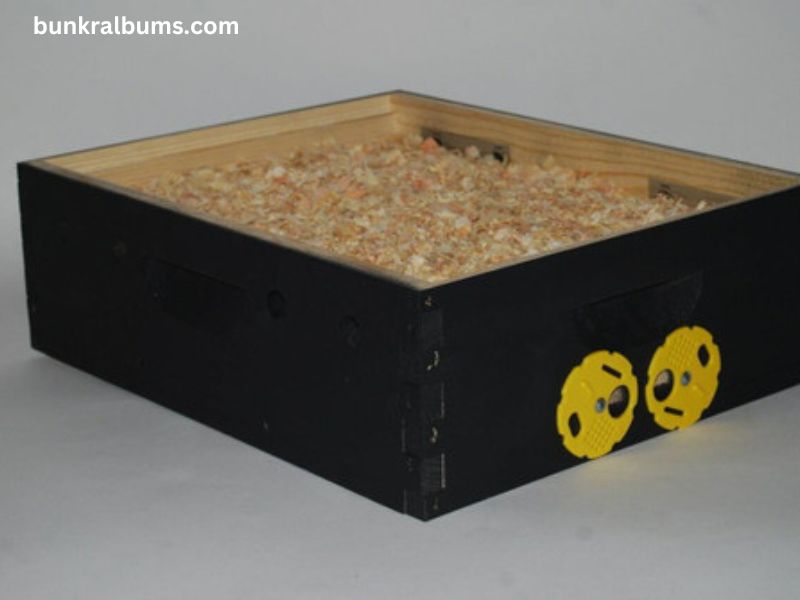As winter approaches, beekeepers face the challenge of keeping their hives healthy and thriving through the cold months. One effective way to protect bee colonies during this harsh season is by using winter bee hive wraps. Lappes Bee Supply, a reputable provider of beekeeping supplies, offers a range of winter hive wraps designed to help beekeepers ensure their bees survive and thrive in the winter. This article delves into the importance of hive insulation, the types of wraps available, and tips for winter hive management.
Understanding the Need for Winter Hive Wraps
Bees are remarkably resilient creatures, but they face significant challenges during winter. As temperatures drop, the risk of chilling and starvation increases. Without proper insulation, hives can lose valuable heat, leading to decreased activity and, ultimately, the death of the colony.
The Challenges of Winter Beekeeping
- Temperature Control: Honeybees generate heat by clustering together, but if the exterior of the hive is too cold, maintaining an optimal internal temperature becomes difficult.
- Moisture Management: High humidity inside the hive can lead to mold and disease. Insulation helps regulate moisture levels by minimizing condensation.
- Starvation: Inadequate food stores can lead to starvation. While wraps do not directly address this issue, they can help maintain a stable environment, allowing bees to access their food reserves more effectively.
Benefits of Winter Hive Wraps
Winter bee hive wraps provide several benefits that enhance the survival of bee colonies during the winter months:
- Insulation: Wraps offer thermal insulation, helping maintain warmth within the hive.
- Moisture Control: Many wraps are designed to reduce condensation, protecting the bees from excessive moisture.
- Wind Protection: Strong winds can chill hives; wraps provide an additional barrier against the elements.
- Pest Deterrent: Some wraps can help deter pests from invading hives during the winter.
Types of Winter Bee Hive Wraps
Lappes Bee Supply offers various types of winter hive wraps, each tailored to meet specific needs. Here are some popular options:
1. Insulated Foam Wraps
These wraps are made from high-density foam that provides excellent insulation. They are easy to apply and remove, making them a favorite among beekeepers. The foam retains heat while allowing some airflow to prevent moisture buildup.
2. Reflective Wraps
Reflective wraps are designed to reflect sunlight, helping to maintain a stable internal temperature. This is particularly beneficial during sunny winter days, where excess heat can be trapped in the hive.
3. Tar Paper or Felt Wraps
These wraps are made from durable materials that provide wind resistance and moisture control. They are typically less expensive than foam wraps and can be an effective alternative for beekeepers on a budget.
4. Customizable Insulation Kits
Lappes also offers customizable kits that allow beekeepers to choose the materials and insulation levels that best suit their specific climate conditions. These kits may include a combination of foam, reflective materials, and moisture barriers.
How to Properly Wrap Your Hives
Applying winter wraps requires careful attention to detail to ensure that the bees remain safe and comfortable. Here’s a step-by-step guide on how to properly wrap your hives using Lappes Bee Supply products.
Step 1: Assess Your Hive
Before applying any wrap, check the condition of your hive. Ensure that it is structurally sound, free of disease, and has sufficient food stores. Strong colonies are more likely to survive winter.
Step 2: Choose the Right Wrap
Select the wrap that best meets your needs. Consider your local climate, the size of your hive, and your budget.
Step 3: Prepare the Hive
Make sure the hive is clean and dry. Remove any debris or old wraps from the previous season. This ensures a fresh start for your bees.
Step 4: Apply the Wrap
- Measure and Cut: Measure the dimensions of your hive and cut the wrap accordingly. Most wraps are designed to fit standard hive sizes.
- Wrap the Hive: Start at the bottom and work your way up. Ensure that the wrap covers all sides and is secured properly. You may use staples, tape, or Velcro to keep the wrap in place.
- Ventilation: Ensure there is proper ventilation. Some wraps come with ventilation holes, or you can create small openings to allow airflow without compromising insulation.
Step 5: Monitor the Hive
After wrapping, periodically check the hive to ensure that everything is intact. Look for signs of moisture buildup or pests. Adjust the wrap as necessary.
Tips for Winter Hive Management
In addition to wrapping, there are several management practices that beekeepers can implement to enhance winter survival.
1. Feed Your Bees
Ensure that your bees have adequate food stores. Feeding sugar syrup in the fall can help build reserves. Consider using fondant or candy boards specifically designed for winter feeding.
2. Monitor for Pests
Regularly inspect your hives for signs of pests such as mice, wax moths, or varroa mites. Implement pest management strategies as needed.
3. Reduce Hive Entrance
A smaller entrance helps keep the hive warm and protects against predators. Use entrance reducers to limit access during winter months.
4. Keep Hives Dry
Prevent moisture buildup inside the hive by ensuring proper ventilation. Consider adding a moisture board or using hive wraps with moisture management features.
5. Plan for Spring
As winter ends, begin preparing for spring. Monitor the health of your colonies and plan for necessary interventions, such as adding supers or requeening if needed.
Conclusion
Winter bee hive wraps are an essential tool for beekeepers looking to protect their colonies during the cold months. By insulating hives and managing moisture, these wraps help ensure that bees survive and remain healthy until spring. Lappes Bee Supply offers a variety of high-quality wraps tailored to different needs, making it easier for beekeepers to choose the right protection for their hives.
Investing in winter wraps and practicing good hive management can make a significant difference in the survival and health of bee colonies. As winter approaches, beekeepers should prioritize their hive care to ensure a successful transition into the warmer months. With the right preparation, beekeepers can look forward to a thriving bee population ready to pollinate and produce honey in the spring.







